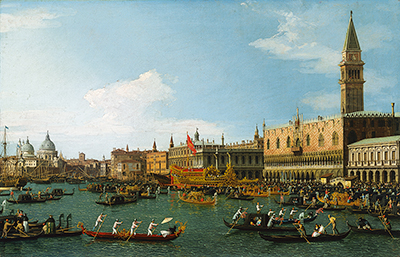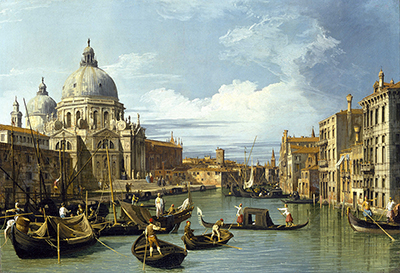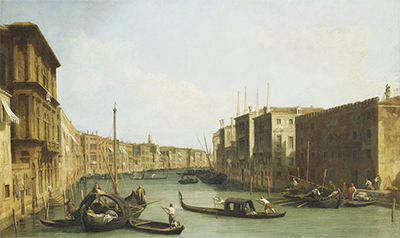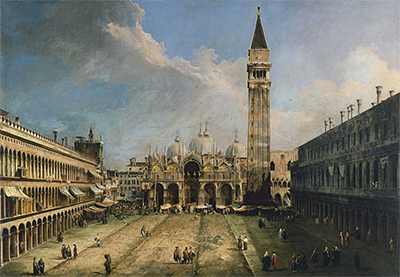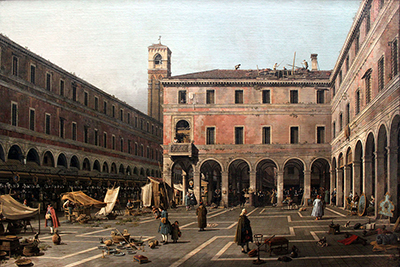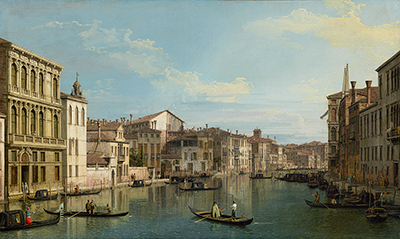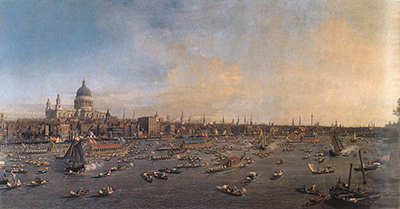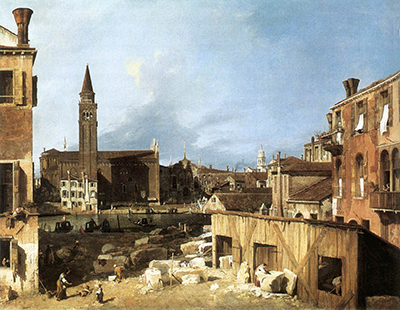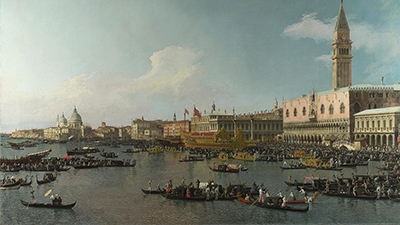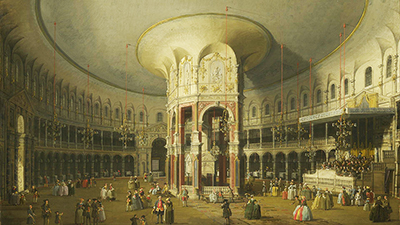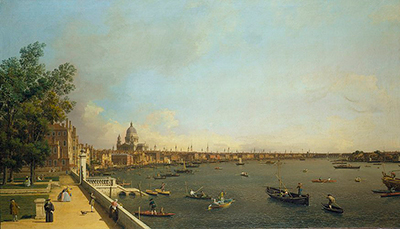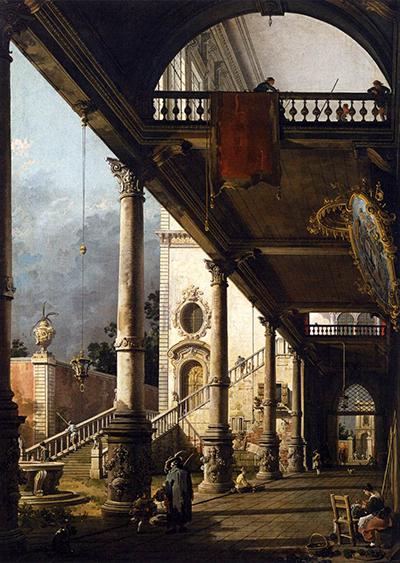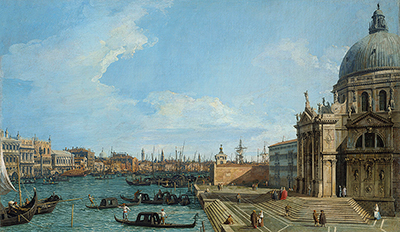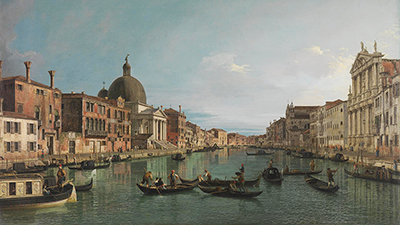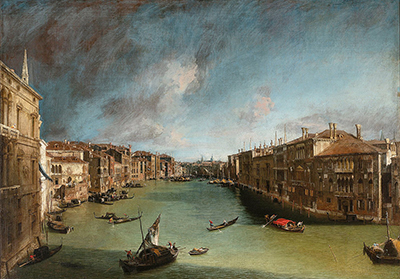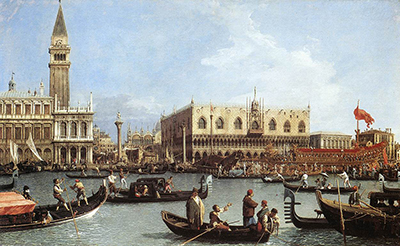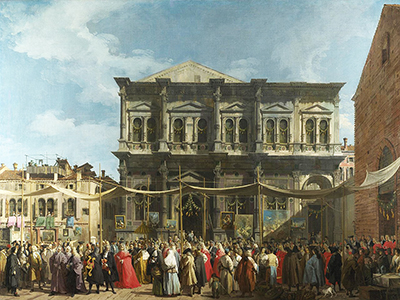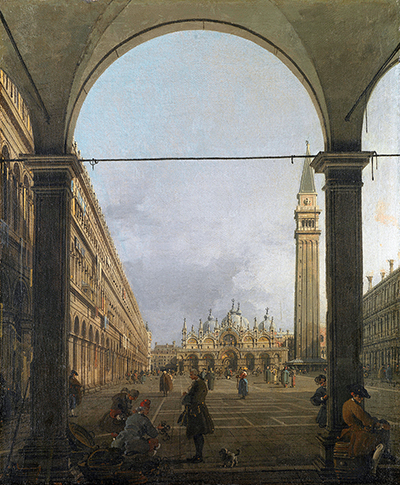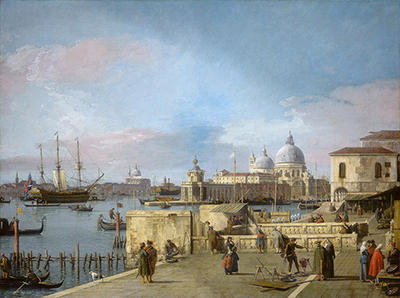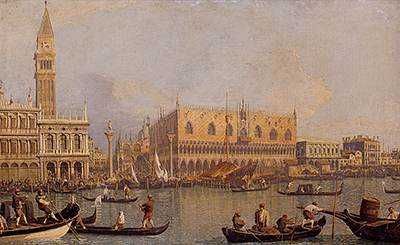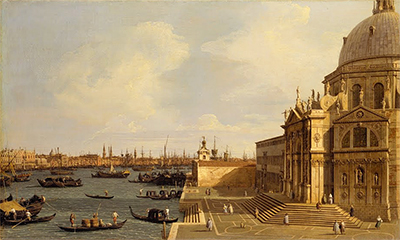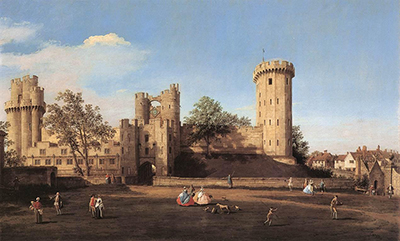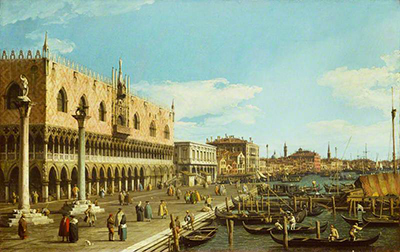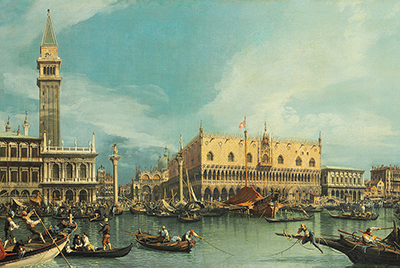Canaletto is amongst the most famous cityscape artists in history and decorated large canvases throughout the 18th century in his unique take on the Roccoco art movement.
This is an artist who will always be linked to the architecture of Venice, where he produced many of his most famous paintings. Besides this stunning location, he also produced considerable amounts of work in Rome and London too, no doubt intrigued by their differences in architecture, climate and any other factors that would impact his work. Giovanni Antonio Canal, to give him his birth name, was a Venetian native and at that time it was actually its own Republic, years before the merging of what we now know as Italy. It is hard to imagine anyone doing more to promote the beauty of this famous city, with his cityscapes capturing the charm of both the architecture and also its people. It has since inspired many other artists to make a visit to this part of Italy, almost as if on an artistic pilgrimage, led by their understanding of Canaletto's paintings.
One of the most memorable elements of this artist's work is the extraordinary detail which can be found spread across his enormous canvases. Few in the modern era would put so much time into single artworks, and despite this attention to detail Canaletto was still able to produce hundreds of paintings during his career. He even had the time to work on a number of drawings, some as study pieces for later paintings, as well as some etchings too. His oevure continues to be celebrated prominently within Italy and the UK, with his original artworks mainly remaining within these two countries. His depictions of everyday life, within the beautiful surroundings of these historic cities, appear to have retained their charm and popularity all the way up to the present day. Exhibitions of his work remain frequent and he receives new followers and supporters everytime focus is placed on his work.
Canaletto set up a large studio from which a number of other students would also go on to flourishing careers later on. Francesco Guardi is perhaps the most famous of these, but Canaletto also taught several members of his extended family, one of whom would use the same name as his teacher in order to sell his own work - this led to later issues regarding attribution and would ultimately damage both of their careers. In the present day there are enough techniques of identifying artists and their work that many of these issues have been cleared up. We can appreciate his works as his, and treat the other artists from his studio with greater clarity and understanding of them as individuals. The city of Venice has long been a famous and romantic destination, promoted by art and literature, but few have exposed its beauty quite as well as Canaletto.
Whilst art academics studying the history of Italian art will always place the most focus on the figureheads of the Renaissance era, such as Michelangelo, Leonardo da Vinci and Raphael, there is a considerable following for Canaletto's work within the public. He seems to connect with the wider audience who are less concerned about legacy or influence, but appreciate the immediate beauty of an artwork. This helps to ensure that exhibitions of his work continue into the future and they remain well attended. Whilst elements of traditional art struggle to connect with younger audiences, this artist's bright and detailed canvases can avoid the same pitfalls. The section below features his most famous paintings, though there is plenty more to enjoy from a catalogue of hundreds, capturing the three main cities in which he worked - namely, Venice, Rome and London.



